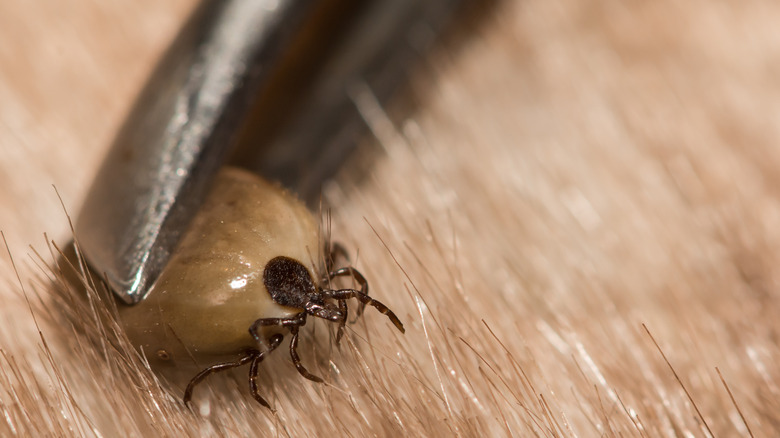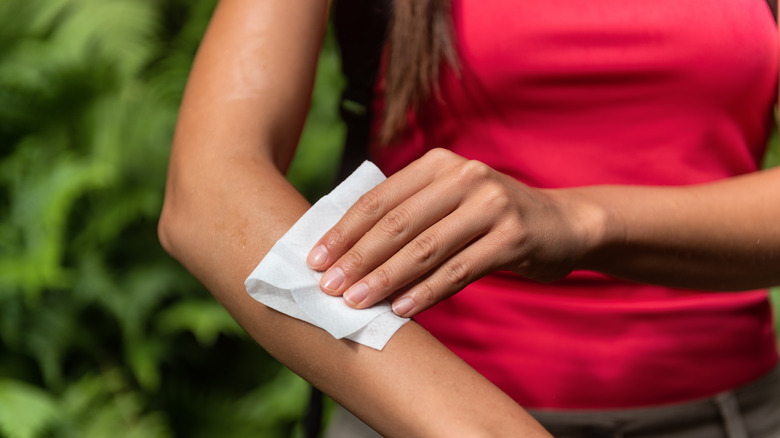How To Safely Remove A Tick
Belonging to the same group as scorpions and spiders, ticks feed on the blood of their host (via Medical News Today). Though they measure only a few millimeters in size, these eight-legged pests can pose a significant risk to human health through the transfer of diseases such as Lyme disease (per InformedHealth.org). Once bitten, it's important to remove the entirety of the tick promptly. The longer a tick remains embedded in the skin, the higher our chances for disease transfer — particularly after 24 hours, according to research published in American Family Physician.
While you might think tick removal to be as easy as ripping the parasite from the body like a bandaid, improper tick removal can actually increase our risk for infection (via InformedHealth.org). Therefore, it's important to know what to do and what not to do if you find one of these unwelcome visitors hiding in the folds of your skin.
Proper tick removal
Per the U.S. Centers for Disease Control and Prevention (CDC), you'll want to use a pair of clean tweezers to remove the tick from your body. Fine-tipped tweezers that are angled inward will be your best bet (InformedHealth.org). Flat-end tweezers on the other hand, such as those used to pluck our eyebrows (via Medical News Today), are more likely to squeeze the tick and potentially push more of its fluid into our body. You'll also want to avoid using overly-sharp forceps, says American Family Physician.
Securing the tweezers around the mouthparts of the tick, you'll then slowly and evenly pull with an upward motion to remove it (via CDC). Avoid any twisting or jerking motions, as this can rip the body of the tick, leaving its head embedded in the skin. If the head gets left behind, it is often visible as a tiny, black dot (via InformedHealth.org). Once removed, wash your hands with soap and water, disinfect the site with rubbing alcohol, and properly dispose of the tick by flushing it down the toilet, placing it in alcohol, or sealing it in tape and throwing it out (per CDC). If you're unable to remove it on your own, you may need a doctor's assistance.
As published in American Family Physician, do not attempt to remove the tick by applying flame or heat. In addition, petroleum jelly, nail polish remover, alcohol, or gasoline are not approved substances for tick removal.
How to protect yourself against tick bites
When it comes to tick bites, a good defense is truly your best offense. If you don't get bitten by a tick, you will not need to remove one. Nor will you be at risk of contracting the diseases that are carried by ticks.
Experts at Medical News Today advise steering clear of heavily-wooded or leafy areas while outdoors and remaining in the center of trails when hiking. In addition, wearing protective clothing — such as long pants, high boots, and long-sleeved shirts — as well as keeping any potentially exposed areas of your body covered, can help. Utilizing tick repellent products with 20% to 30% DEET can also help keep ticks at bay. Lastly, the Army Public Health Center suggests thoroughly examining your body for ticks after being in any potential tick habitat, particularly paying attention to the ears, belly button, hairline, backs of the knees, and under the arms.



